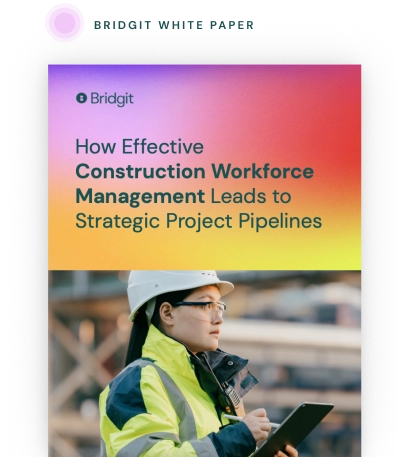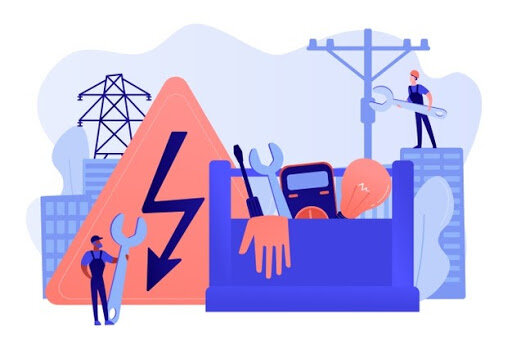Finding work as a subcontractor isn’t always easy, especially for companies based in large urban centers with plenty of competition. Keep reading for some tips regarding how to get work as a subcontractor, regardless of your specialty.
Table of Contents
How to find subcontracting work: 9 tips
Reach out directly to general contractors in your area
You don’t have to wait for general contractors to get in touch with RFPs. As a subcontractor, it often helps to strike first and let potential clients know you’re available for requests.
Start by creating a list with contact information for local contractors that would benefit from your services. Then, create a process for engaging with these contractors periodically so you remain top-of-mind.
Not sure where to find clients for your list? Check out our article on the top 40 largest construction companies in Canada. Given their size, many of these companies have locations throughout the entire country.
If you work in the United States, check out Engineering News-Record’s Top 400 Contractor list. As with entries on our Canadian list, many of those companies have offices throughout Canada.
If you don’t have any luck with these major general contractors, ask around in your network. Other subcontractors you’ve worked alongside may be motivated to provide leads.
Whatever strategy you use to identify general contractors worth contacting, make it part of your routine. Even if your correspondence doesn’t translate into new contracts immediately, view it as relationship-building.
Set alerts for online advertisements relevant to your services
There are many platforms on which prospective clients post jobs you can apply to. Check out our list.
Many subcontractors create accounts on multiple platforms and set alerts for relevant listings. This is a great way to automate your lead generation process.
Make sure your alerts are specific enough to provide genuine value. Otherwise, you’ll find yourself ignoring alerts as they come in, which defeats the purpose. Tailor your notifications to specific keywords relevant to your specialty (i.e. “electrician,” “HVAC,” “masonry,” whatever the case may be).
Look for government contract opportunities
The private sector is just one area in which you can find potential clients. Throughout North America, many state and local governments also maintain websites that host contract opportunities.
These websites can be a great source of work for subcontractors of any size, especially those looking to add valuable experience to their portfolios.
Keep an updated website showcasing your capabilities
Many subcontractors looking for work fail to recognize the importance of their websites. This is a grave error since clients almost invariably take a look. If your website seems like it hasn’t been updated in 10 years, potential clients may assume your contracting business doesn’t get much work. This might prompt them to wonder why, which isn’t the initial impression you want to make.
Even if your website is updated regularly, a lack of specificity can similarly raise doubt regarding what your contracting business actually does. Consider including a frequently asked questions section that will clear up any potential confusion.
Present your company’s best side in every interaction
Of course, your subcontracting company’s website is just one of many client-facing elements you need to think about. Don’t ignore the importance of high-quality business cards and proposal templates as well, to name a couple of additional assets.
Prospective clients will often view these materials as indicative of your company’s attention to detail and workmanship. Presentation matters!
Focus on submitting the right proposals to the right jobs
To some degree, bidding on projects as a subcontractor is a numbers game. Many companies in construction have bid-hit ratios around 1:5, requiring hundreds of bids just to keep everyone busy for the year.
If your bid-hit ratio is far poorer than that (or whatever’s the norm for your area), however, there’s a good chance your bidding process needs an overhaul. Rather than increasing the number of proposals you submit (which can be unsustainable), write better bids. Once your ratio is more reasonable, it may make sense to ramp things back up.
Check out this post for some tips on crafting winning bids.

Use your workforce data to create a competitive advantage
Download our white paper to see how effective workforce planning can help stay ahead of labor demands and create a strategic project pipeline.
Keep your workforce’s capacity in mind
As a subcontractor, idle workers are problematic for several reasons.
First, when they’re not working yet still receiving salaries and benefits, your company’s bottom line is obviously impacted. Second, workers who feel insufficiently challenged may be tempted to leave elsewhere for other opportunities, which disrupts your human capital management process.
This isn’t always as obvious as workers visibly idling around the shop, though. An under-utilized workforce can also manifest itself in the form of workers taking much longer to complete tasks than they would if other projects were waiting on them.
This underscores the importance of maintaining a comprehensive workforce management process that includes software capable of tracking related data. Check out our flagship program, Bridgit Bench, which is used by countless contractors for workforce management.
Related to workforce capacity, remember that keeping your workforce occupied 100% of the time isn’t ideal. Savvy subcontractors make room for professional development in their employees’ schedules. Check out this post for some tips on striking a balance.
Once you’re tracking these data points, you’ll find it’s much easier to gauge your company’s capabilities, which can inform your job-seeking.
Attend networking events with potential clients and business partners
Group networking events provide an opportunity to shake hands with prospective clients and business partners. Making the right impression at these events can dramatically increase your company’s likelihood of catching a procurement manager’s attention when submitting future proposals.
While COVID-19 has rendered in-person events impractical for the foreseeable future, there are still online opportunities. At Bridgit, for example, we’ve been hosting online events and webinars throughout the pandemic. Check them out!
Although you may lack the ability to interact fully with other attendees of online events, you can still glean valuable information that can make your bid-related conversations more personable.
Be consistent
Finding jobs and submitting bids is part of a subcontractor’s work. It’s every bit as important as honing your craft.
That’s why smart and successful subcontractors apply for new jobs consistently (as long as their workforce has capacity). It’s not a matter of applying for a few contracts here and there then waiting to hear back. With substantial labor costs on the line for each day of inaction, taking the bidding process seriously can be an existential matter for your company.
We hope this article has been helpful in showing you how to find subcontracting work. For more tips on construction project and resource management, visit our blog. You may also want to check out “bridging the gap between construction and technology“.


